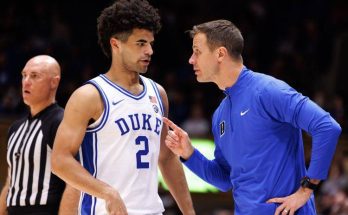Here’s an in-depth exploration of Tennessee’s reported return to Adidas in 2026—what’s driving the deal, the deep-rooted history behind it, vocal fan reactions, the broader landscape of collegiate apparel contracts, potential implications, and what lies ahead. I’ve covered key angles, analyzed the factors at play, and aimed to give a compelling narrative enriched by context, data, and quotes from real voices.
In early July 2025, a wave of reports confirmed what’s been simmering beneath the surface: once Tennessee’s Nike contract expires in June 2026, the Volunteers will return to Adidas. According to Sports Illustrated, “the Volunteers will switch back to Adidas as their official apparel supplier once their current deal with Nike expires in 2026”
This change is more than just a uniform update. It represents a multi-dimensional shift—financial, cultural, and strategic—marking a major turning point for Tennessee athletics.
The primary driver is dollars. Tennessee’s current Nike deal brings in around $5–5.5 million per year in cash and product But Adidas is reportedly offering significantly more—some estimates suggest nearly double that figure). In today’s environment, maximizing revenue across all revenue streams is critical.
Beyond cash, Adidas is viewed as more athlete-friendly on Name, Image, and Likeness (NIL) matters. Adidas’ marketing approach emphasizes athlete empowerment and creative expression—essential in the modern collegiate sports era. Sports Illustrated notes Adidas “has become increasingly aggressive in the collegiate space, particularly with NIL-driven incentives and athlete branding opportunities”
Timing is key. Nike’s contract ends June 30, 2026—the exclusive negotiation window closed in March 2025, freeing Tennessee to entertain outside bids Journal). Since universities typically finalize new deals a year in advance, this summer could mark official selection—giving Adidas time to design, produce, ship, and unveil fresh gear for the 2026 season .
UT’s Adidas roots run deep. From 1995 to 2014—nearly two decades—the school wore Adidas while riding the highs of football glory, including a 1998 national (Sports Illustrated). Many fans still associate that era with success on Rocky Top.
In 2014, UT signed an eight-year deal with Nike for $35 million, making the switch official in July 2015 (fanrecap.com, FOX Sports). That partnership later extended to 2026, evolving into an 11-year agreement valued at over $50 million (€11 million in cash and $40 million in product) (athleticbusiness.com, FOX Sports).
Nike modernized Tennessee’s look—introducing cohesive orange shades, sleek templates, slick alternate gear (e.g., “Smokey Gray”), and stronger marketing alignment (FOX Sports).
As news broke, social media lit up—with many Tennessee diehards voicing vehement opposition:
- “NO NO NO @AD_DannyWhite” – a cry to their athletic director (allfortennessee.com).
- One fan vowed: “I won’t touch any merchandise … I know many others would do the same.” (allfortennessee.com).
- “I am absolutely disgusted… PLEASE don’t go adidas 😭😭😭😭😭😭😭😭😭” (allfortennessee.com).
The crux? Adidas is blamed for prior mismatched orange—too yellowish, inconsistent tints—that Nike supposedly corrected (allfortennessee.com). Fans call it a visual downgrade.
Not universal distrust: Some fans see clear upside if Adidas brings double Nike’s deal (allfortennessee.com). Even players like defensive lineman Daevin Hobbs took to social media pragmatically: “Keep the check,” he said, citing Nike’s expiring contract and the compelling Adidas offer (tennessee.rivals.com).
- 2014–15: 8-year, $35 million contract (~$950k/year plus $3.2 million retail product) (FOX Sports).
- Amended in 2016 for 3 years through 2026; updated compensation:
- Annual cash: $1 million (increased to $1.2 million by 2023–26)
- Product allotment rose to $4.5 million annually (tennessee.rivals.com, Sports Illustrated).
- Total value: $50+ million across 11 years (athleticbusiness.com).
While exact Adidas-UT terms are undisclosed, insiders suggest double Nike’s payout (~$10–11 million/year) (utsports.com). Another rumor included a jaw-dropping $1.3 billion valuation across a comprehensive, gear-plus-NIL partnership—though this needs scrutiny .
Per Sports Business Journal, Adidas outfits only two SEC programs currently: Mississippi State and Texas A&M. The majority, including Tennessee, are with Nike. This impending switch would shift UT into rarefied Adidas territory in the conference (Reddit).
The Nike era brought consistency. All gear shared a unified “Tennessee orange,” crisp lines, and iconic alternates, anchoring an image of polished professionalism (fanrecap.com).
The less flattering images from Adidas—light, off‑orange jerseys circa 2011–14—still sting fans . However, Adidas has reportedly improved design-wise; a 2023 Reddit thread notes, “Adidas has consistently pumped out some of the ugliest unis in sports history… luckily nowadays most teams have switched from Adidas… ” (Reddit).
While Adidas’ collegiate designs have sometimes missed, there’s growing belief they might avoid a repeat with Tennessee.
Tennessee’s move echoes a national pattern:
- Schools use contract expiration to strengthen NIL and branding leverage.
- Adidas, Nike, Jordan, UA all vie for schools—but NIL-friendliness and cash flow are crucial bargaining chips.
- Nike continues to dominate: per a 2024 study, 62.5% of SEC teams use Nike, Adidas 12.5%, Jordan 12.5%, Under Armour 12.5%Adidas increasing its presence—signing teams like Nebraska, Miami, Texas A&M—but faces design backlash sometimes .
UT’s switch, then, isn’t just about uniforms—it’s part of the larger NIL-driven shake-up reshaping college revenue systems.
One big worry remains color consistency. Adidas will need to deliver the iconic orange properly. If they manage it, fan resistance may soften—but if old mistakes repeat, backlash might follow.
With players like Hobbs already quipping “Keep the check,” player influence is clear Adidas’ ability to align with athletes engaged in NIL branding may be a differentiator.
Negotiations are ongoing; Adidas’s offer may bring in the highest headline, but Nike could respond. Either way, the decision will likely come this summer, about a year ahead of uniforms shipping in 2026 .
Fans committed to Nike have already signaled boycotts. Adidas must produce appealing fan gear and restore retail confidence. Poor performance here could impact apparel sales and new donations.
Will this open the door to Adidas growing within SEC? Could UT’s return trigger interest across fanbases? If Adidas nails NIL support and design, this could revive their collegiate momentum, reshaping brand dynamics across the conference.
- Heritage: A return to Adidas revives Tennessee’s storied past from the 1995–2014 era and the glory years of football.
- Finance: The rumored Adidas offer, potentially double the current Nike deal, is a powerful motivator—critical as NIL reshapes athlete revenue models.
- Brand Identity: Nike brought unity and visual pride; Adidas must match or exceed that to avoid fan alienation.
- Athlete Empowerment: Adidas’ NIL-first approach aligns with today’s student-athlete priorities.
Tennessee’s reported move back to Adidas in 2026 is a compelling blend of nostalgia and financial acumen. While Nike brought polish, consistency, and strong branding, Adidas offers potentially game‑changing revenue and NIL support. But can the Three Stripes deliver an orange that truly sings? And will fan skepticism—still haunted by past inaccuracies—dissolve with modern execution?
In the end, this isn’t just a uniform swap—it’s a landmark moment in college sports’ evolution, where athlete agency, brand deals, and campus identity collide. As Adidas returns to Rocky Top, all eyes will be on whether they can bring renewed pride while writing a new chapter in Tennessee tradition.


